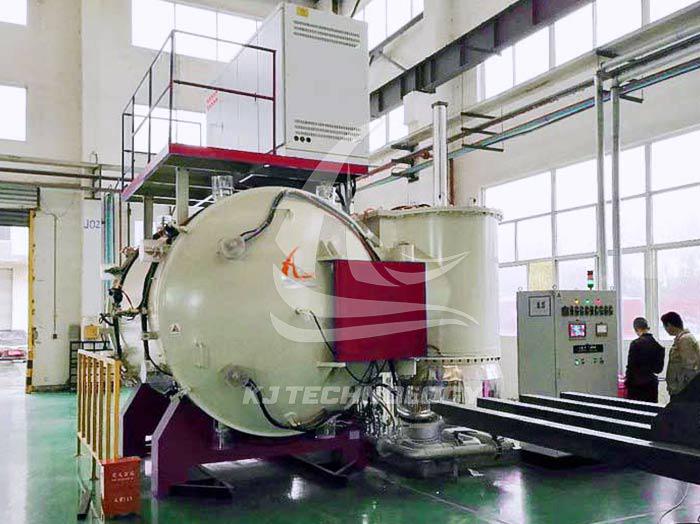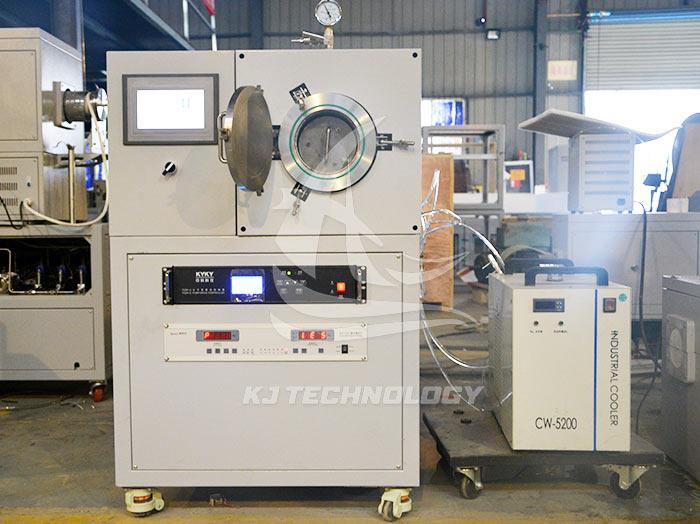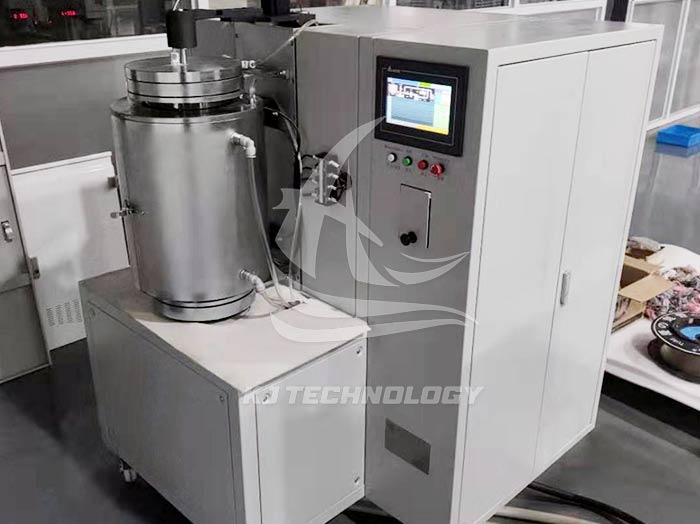Can high vacuum and high temperature brazing electric furnaces brazing ceramics?
 08-26-2025 Author: KJ technology
08-26-2025 Author: KJ technology
The high vacuum and high temperature brazing electric furnace can brazing ceramics. Its principle is to use a vacuum environment to eliminate oxidation and pollution, and promote wetting through active elements, achieving a strong connection between ceramics and metals or other ceramic materials. The following is a specific analysis:
1. Technical principle: Active brazing in vacuum environment
Eliminate oxidation and pollution
Ceramics are prone to react with oxygen and nitrogen at high temperatures to form an oxide layer, which hinders the wetting of brazing materials. A high vacuum environment (usually below 0.1 Pa) can effectively isolate oxygen, prevent ceramic surface oxidation, and reduce the volatilization of active elements in the brazing material, ensuring welding quality.
Active elements promote wetting
The interface energy between ceramics and general metals is high, making it difficult to be wetted by low melting point alloys. By adding strong carbide forming elements such as titanium (Ti) and chromium (Cr) to the brazing material, these elements diffuse towards the ceramic surface at high temperatures, generating carbides (such as TiC, Cr ₇ C ∝), thereby reducing interfacial tension and achieving good wetting of ceramics by the brazing material. For example, Ag Cu Ti alloy can completely wet alumina ceramics at 850 ℃, forming a strong metallurgical bond.
Chemical metallurgical bonding mechanism
During the high-temperature brazing process, dissolution, diffusion, and chemical reactions occur at the interface between ceramics, brazing materials, and substrates (such as steel and hard alloys). For example:
Ceramics and brazing materials: Ti element combines with C or O in ceramics to form TiC or TiO, forming chemical bonds.
Solder and substrate: Solder and steel substrate undergo component diffusion at the interface, forming solid solutions or compounds (such as Fe Ti, Ni Ti), achieving high-strength bonding.
2. Technical advantage: Meet the high temperature and high strength requirements of ceramics
High bonding strength
Vacuum brazing, through chemical metallurgy bonding, significantly enhances the bonding strength between ceramics and metals compared to mechanical or adhesive bonding. For example, the shear strength of the vacuum brazed joint between alumina ceramics and 304 stainless steel can reach 135.9 MPa, meeting the requirements of high temperature and high pressure working conditions.
high-temperature resistance
The brazing material used for direct brazing has a high melting temperature and can meet the requirements for high-temperature use of ceramic components. For example, after brazing silicon carbide ceramics containing 10% free silicon with germanium powder, the brazed joint structure is a Ge Si solid solution, with a remelting temperature of up to 1200 ℃, which can be used in high temperature environments above 1000 ℃.
Sealing and corrosion resistance
Vacuum brazing can obtain dense and defect free welds, avoiding defects such as porosity and slag inclusion, significantly improving the sealing and corrosion resistance of the joint. For example, the vacuum brazed joint between alumina ceramics and tantalum (Ta) has a tensile strength of 140 MPa and can withstand alkaline corrosion environments.
3. Typical application scenarios
In the field of electronics and power
Ceramic packaging shell: Vacuum brazing is used to connect ceramics and metal substrates, achieving high-density packaging of electronic components. For example, the vacuum brazing of alumina ceramics and Kovar alloy meets the high temperature test of 500 ℃ × 48h, and the helium leakage rate is less than 4 × 10 ⁻⁴ Pa · m ³/s.
High temperature electrical insulator: a vacuum brazed component of ceramic and stainless steel used in power equipment, balancing insulation and mechanical strength.
Aerospace and Energy Sector
Heat exchanger: Vacuum brazing of alumina ceramics with high-temperature resistant metals such as tantalum (Ta) and niobium (Nb), used for heat exchange components in nuclear reactors or aircraft engines.
Infrared radiation source: Ceramic and metal vacuum brazed components are used for high-temperature infrared heaters, requiring the joint to withstand temperatures above 1000 ℃.
Precision instruments and tools
Ceramic cutting tools: Vacuum brazing of silicon nitride (Si ∝ N ₄) ceramics and hard alloys, used for manufacturing high-performance cutting tools.
Sensor components: Vacuum brazing of ceramics and metals is used in the manufacturing of precision components such as pressure sensors and temperature sensors.
4. Process parameters and equipment requirements
Key process parameters
Brazing temperature: usually 30-50 ℃ higher than the melting point of the brazing material, for example, the brazing temperature of Ag Cu Ti alloy is 850 ℃.
Insulation time: 5-20 minutes to ensure sufficient interface reaction.
Vacuum degree: below 0.1 Pa, avoid oxidation.
Heating rate: Ceramics have poor thermal conductivity, and it is necessary to control the heating rate (such as 10-15 ℃/min) to avoid thermal stress cracking.
Equipment Requirements
High vacuum system: equipped with molecular pumps or diffusion pumps to achieve rapid vacuum extraction.
Efficient heating system: using graphite heater or induction heating to ensure temperature uniformity (± 5 ℃).
Cooling system: Rapid cooling to reduce thermal stress and avoid substrate deformation.








